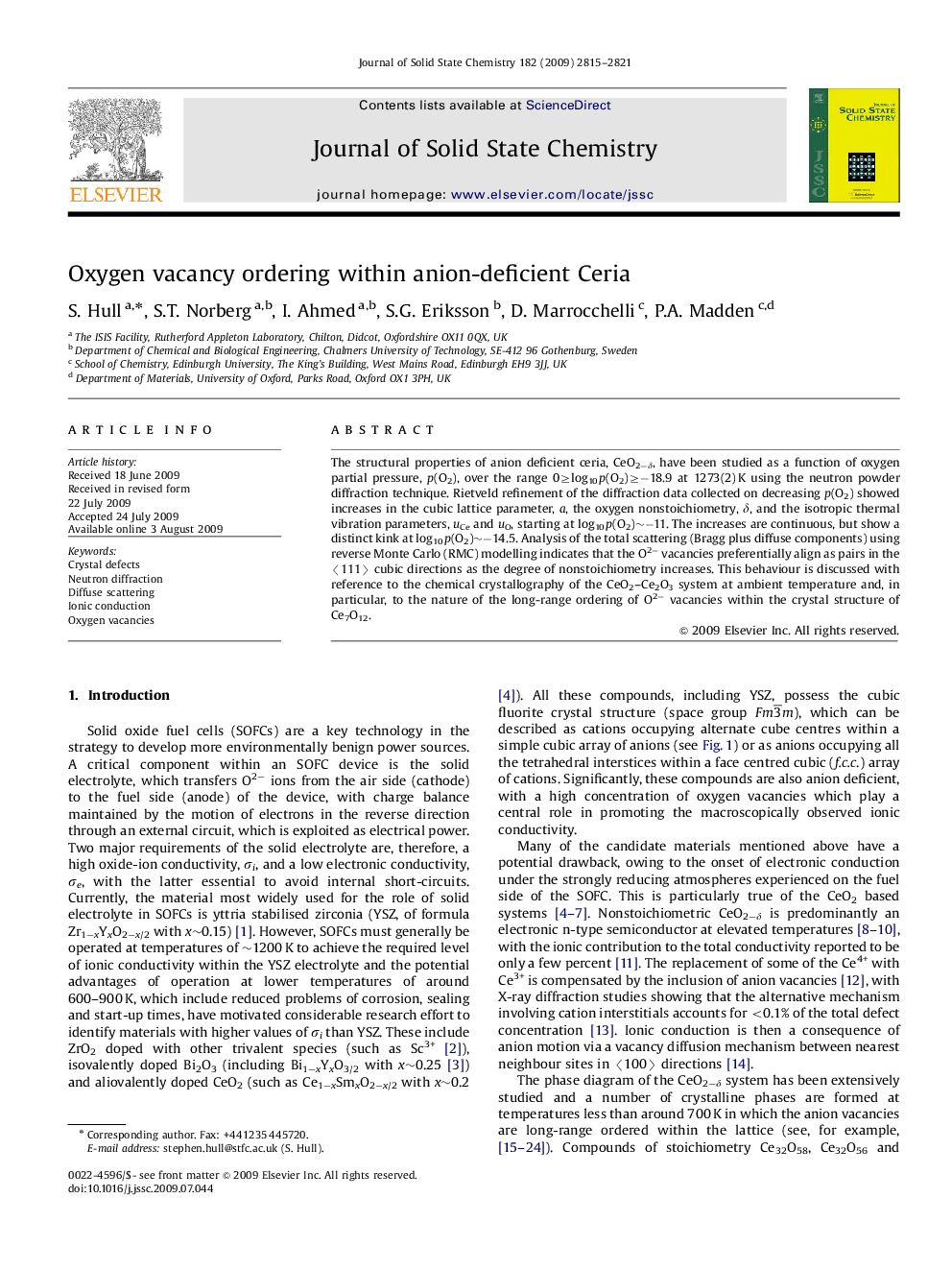| Article ID | Journal | Published Year | Pages | File Type |
|---|---|---|---|---|
| 1330967 | Journal of Solid State Chemistry | 2009 | 7 Pages |
The structural properties of anion deficient ceria, CeO2−δ, have been studied as a function of oxygen partial pressure, p(O2), over the range 0≥log10 p(O2)≥−18.9 at 1273(2) K using the neutron powder diffraction technique. Rietveld refinement of the diffraction data collected on decreasing p(O2) showed increases in the cubic lattice parameter, a, the oxygen nonstoichiometry, δ, and the isotropic thermal vibration parameters, uCe and uO, starting at log10 p(O2)~−11. The increases are continuous, but show a distinct kink at log10 p(O2)~−14.5. Analysis of the total scattering (Bragg plus diffuse components) using reverse Monte Carlo (RMC) modelling indicates that the O2− vacancies preferentially align as pairs in the 〈111〉〈111〉 cubic directions as the degree of nonstoichiometry increases. This behaviour is discussed with reference to the chemical crystallography of the CeO2–Ce2O3 system at ambient temperature and, in particular, to the nature of the long-range ordering of O2− vacancies within the crystal structure of Ce7O12.
Graphical abstractPartial radial distribution function for oxygen vacancies within CeO1.710 at 1273 K (solid line) showing the increased tendency for local ordering in 〈111〉〈111〉 directions compared to a random distribution (dashed line).Figure optionsDownload full-size imageDownload as PowerPoint slide
